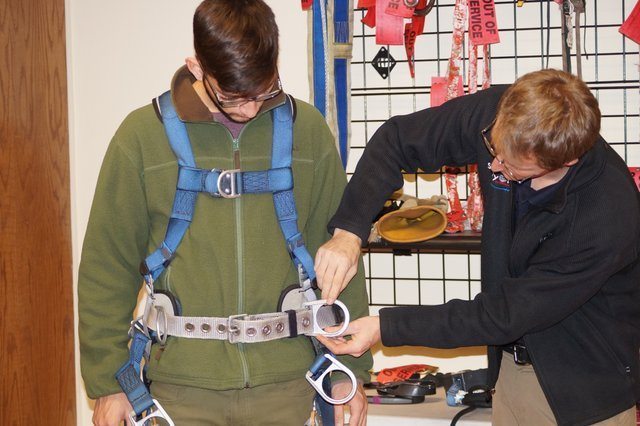Wireless Infrastructure Association President Jonathan Adelstein is on a mission to develop a competent, consistent wireless workforce that will be ready to perform as the industry gears up for the rollout of “5G.” In addition to creating jobs with growth potential, developing a credentialed wireless workforce will increase worker safety and save companies money by reducing the number of jobs that need to be done more than once.
“We are seeing a real skills gap growing in the wireless infrastructure industry where there aren’t enough people who are trained in radio frequency engineering and trained in the basics of radio frequency dynamics,” Adelstein told RCR Wireless News’ Industrial IoT 5G Insights. “There’s also more need for training on the specifics of how you deploy these networks. How do you get the cabling in place, how do you connect the antennas, how do you make sure they’re optimized? There’s a real shortage of people who know what they’re doing.”
Since becoming president of WIA (formerly PCIA), Adelstein has committed the industry trade group to numerous initiatives designed to recruit more people and ensure they are properly trained. WIA helped secure federal support for the Telecommunications Industry Registered Apprenticeship Program and is closely partnered with Warriors4Wireless. The trade group was also instrumental in securing federal funding for college-level courses in applied wireless technology. Part of that funding is earmarked for the development of standards and certifications for wireless training programs, which WIA is supporting in partnership with the National Wireless Safety Alliance and the National Association of Tower Erectors.
Leaders from these organizations updated the industry on their progress at this year’s Wireless Infrastructure Show. The National Wireless Safety Alliance meets roughly once a month to work on standards and curriculum for certification. Marty Travers, president of Black & Veatch’s telecom division, is one of the industry leaders who has volunteered to be part of the group. Travers said the goal is to create certifications that will become the “admission ticket” into the wireless industry. NWSA plans to create two levels of certification, tower technician 1 and tower technician 2, with the second level representing a higher level of technical competence.
“People who are joining the industry and want to develop a career will be able to go through a very well-documented training and then a test, both a written test and a practical test, in order to become certified,” said Travers. “Our expectation is that the entire industry will look to that.”
Roughly 45 companies are represented within the National Wireless Safety Alliance, Travers said, including all the carrier and tower companies, several engineering and design-build firms like Black & Veatch, construction firms and several equipment manufacturers. Travers added the group is open to new members and wants to include “as much of the industry as practical.”
Scott Kisting, president of TIRAP, said NWSA certifications will be key to his organization as it develops apprenticeship programs in partnership with employers. The TIRAP claims it’s different from other industry apprenticeship programs in that it’s mandate is to use certifications developed by an industry consortium instead of by a company or group of companies. For this reason, the NWSA certifications will be critical to TIRAP and to the various private companies that train tower technicians.
“They’re actually setting up a means for us to understand what the bar is that you must be able to cross,” said Kisting. “The testing will be there. That’s going to enable training companies … to understand what they should be training.”
Training is also taking place on college campuses, thanks to federal funding for programs at Aiken Technical College, Texas A&M University and Virginia State University. Aiken Technical College has been very successful by offering a short-term course that leads to a credential called “tower one certification,” according to Deb Bennett of DB Consulting. Texas A&M also offers a two-week program through its engineering extension service. Bennett said VSU has had less interest in its program, which is longer and more focused on theory, and that the university is making some changes.
Warriors4Wireless President Vince Patton said all three of the college-level programs recruit students from his group and the program is successfully placing veterans with employers in the wireless industry. Patton said the brief nature of the training programs is well-suited for military veterans, who are accustomed to learning new skills within a condensed timeframe.
Follow me on Twitter.

Wireless workforce: training and certification update
ABOUT AUTHOR
